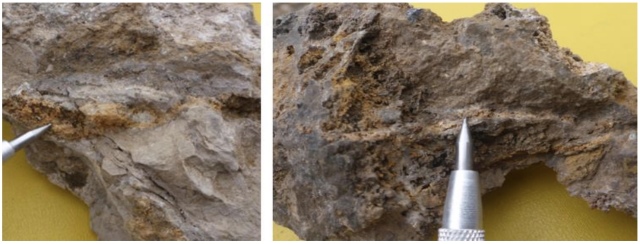High grade zinc discovery at Inca Minerals’ Cerro Rayas project

Inca Minerals (ASX: ICG) emerged from a trading halt this morning with news an underground sampling program at its Cerro Rayas project in Peru had uncovered high grade zinc of 40.92%.
The samples were taking from Vilcapuquio and Torrepata small scale mines and produced several assays with zinc grades in excess of 30%. High grade lead was also identified with the highest assay returning 27.15%.
According to the company, the presence of the small-scale mines indicated the project was prospective, with the latest assay results confirming this.

Samples from Vilcapuquio with the left hosting 32.36% zinc and the right containing 42.77% zinc.
The channel samples were taken perpendicularly across mineralised veins, which the company claims give a “good indication” of in situ grades. The mineralisation at Vilcapuquio and Torrepata is believed to be associated with breccia veins that extend north west to south east through the project area. The principal minerals identified include zinc carbonate and lead sulphide with the calcite the main waste material.
“With the second batch of the underground program to come and with surface exploration to cover both known breccia veins and new unexplored parts of the project, Cerro Rayas is certainly an exciting project and a marvellous addition to the company’s zinc portfolio,” Inca Minerals managing director Ross Brown said.
Global zinc market in supply deficit
The International Lead and Zinc Study Group’s data has revealed global zinc and lead market are experiencing a supply deficit which is resulting in higher prices and potentially triggering some operations to come back online.
In July 2017, 9.9 million tonnes of lead was produced, while 10.23 million was consumed. On the zinc side, 11.08 million tonnes of refined zinc was produced and 11.34 million was used.
According to the organisation, demand for lead in the first half of 2017 exceed supply by 86,000 tonnes, while zinc consumption during the same period outstripped supply by 203,000 tonnes.
In April 2017, the group forecast global lead demand would rise 2.3% during 2017, and zinc consumption would increase 2.6%.
